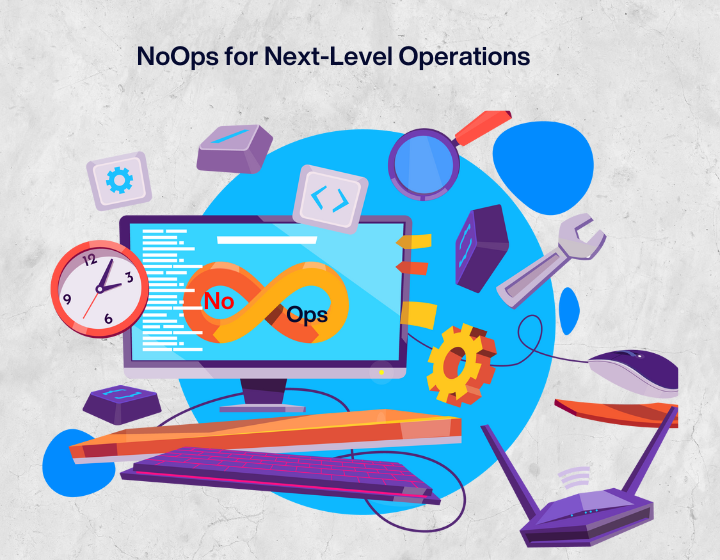
Introduction
NoOps, short for “No Operations”, is an IT environment where many of the functions needed to manage, optimize, and secure IT services and applications are automated, abstracted, and/or performed by someone other than a traditional centralised operations unit. The ultimate goal of NoOps is to streamline and simplify IT operations to the point where human intervention is almost unnecessary.
Working of NoOps
NoOps relies heavily on automation and cloud services. The idea is to automate infrastructure management tasks like provisioning, scaling, and maintenance, which are traditionally handled by an operations team. This is achieved through the use of Infrastructure as Code (IaC) tools and cloud services that provide automated scaling and management features.
Companies Using NoOps and Their Benefits
Several large companies have adopted NoOps, including Amazon Web Services (AWS), Google Cloud Platform, Microsoft Azure, IBM Cloud, and Digital Ocean. These companies have seen significant benefits from adopting NoOps:
NoOps allows developers to roll out changes, features, and entire apps faster than ever before.
NoOps can make it easier to adapt to changes in the market or business requirements.
Self-healing systems can recover from failures or issues without human intervention, improving system resilience
Efficiency of NoOps
NoOps streamlines operations by automating routine tasks, reducing manual effort, and optimising resource utilisation. This leads to faster development cycles, greater agility, and improved scalability. Cost efficiency is a hallmark of NoOps. Embracing a serverless computing model means that businesses are billed only for what they use.
Benefits and Drawbacks of NoOps
Benefits
NoOps can lead to greater efficiency in IT operations by reducing the time and effort required for manual tasks. It also enhances productivity as developers don’t have to continuously work with other teams to complete minor tasks such as infrastructure, operating systems, middleware, or language runtimes.
By minimising the need for human operations teams, organisations can potentially reduce labor costs.
Standardised and automated processes are less prone to vulnerabilities caused by misconfigurations.
Drawbacks
With automation taking over the IT operations, there is a risk of losing the skills and experience of IT professionals who were previously responsible for operations.
Automating IT operations requires a significant investment of time, money, and resources.
Developers may not have the necessary security expertise to identify and mitigate potential security threats.
IT professionals may feel like they are losing control over their infrastructure.
NoOps requires a cultural shift within organisations.
Challenges Faced by Companies Using NoOps
Despite the numerous benefits, companies face several challenges when implementing NoOps:
The loss of the human element is a significant challenge, as automation cannot fully replace human intuition and creativity.
Automating IT operations can be a daunting task for organisations that are new to automation or have limited resources.
NoOps also presents security risks. Automated tools themselves can be vulnerable to attacks, which can compromise the entire IT infrastructure.
With automation taking over IT operations, IT professionals may feel like they are losing control over their infrastructure.
NoOps requires a cultural shift within organisations.
Output of NoOps in Companies
With the sped-up development time, companies create the opportunity to generate revenue sooner, since the software can be completed ahead of schedule. Furthermore, NoOps allows developers and operations teams to do what they do best: develop and operate. NoOps is quickly becoming the new standard in IT operations, and these companies are leading the way.
Conclusion
In conclusion, while NoOps may seem like a perfect solution, it comes with its own set of challenges. These challenges include the loss of the human element, the complexity of automation, security risks, lack of control, and the need for a cultural shift. Despite these challenges, NoOps can be a powerful tool for organisations that are willing to invest the time, money, and resources required to implement it properly. As we move forward, it will be interesting to see how NoOps continues to evolve and shape the future of IT operations.


Leave a comment: